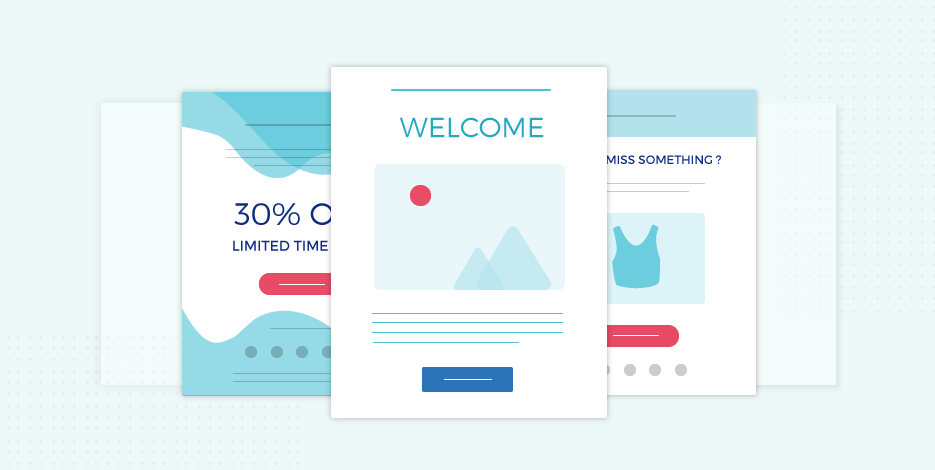
The Ultimate Guide To Email Engagement In 2026
Email marketing remains a stellar digital marketing tactic today, with an ROI of $42 for every dollar spent. Understanding your target audience’s habits and preferences requires creativity, thoughtful planning, and a dedicated strategy; that’s why some marketers find crafting effective email campaigns challenging.
If you’re seeking new, innovative ways to increase your email engagement, this guide can widen your perspective in various ways. We provide insights on important metrics, such as open rates and spam complaints, including best practices, to boost conversions and sales.
If you’re a beginner in this field, we’ll start with a brief definition to clear the air.
What Is Email Engagement?
Email engagement is a marketing measure showcasing how efficient your email campaigns are based on how your contacts interact with them. It can depend on various factors, for example, how many people opened your emails and how many clicked on them to complete the desired action, such as a purchase, a download, or just visiting your website.
Even though different businesses may focus on different email metrics to determine engagement based on their industry, customer journey and similar factors, below are the email metrics everyone should keep a close eye on to improve their email engagement and ROI.
What Are The Top Email Engagement Metrics?
Most businesses use all-in-one email marketing services like Moosend or Mailchimp, providing advanced reporting and analytics tools. Some combine them with platforms like Google Analytics to make more data-driven decisions and enhance their email engagement strategy.
Let’s explore the top metrics:
1. Open Rates
The email open rate is the percentage that shows how many of your subscribers opened a specific campaign out of a particular list. Here’s how to calculate it:

This open rate usually shows how effective your email subject line is, followed by your preview text and sender name. Additionally, recipients are more likely to open emails from brands they know and trust. So, a high open rate is usually a combination of effective copywriting and brand awareness.
The average open rate varies for different industries. For example, while 19% is a good rate for advertising and agencies, it can reach up to 27% in financial businesses.
2. Click-through Rates
The email click-through rate (CTR) indicates how many people clicked on the links of your email marketing campaign. Here’s the formula:

To increase your click-throughs, you should send interesting email content to your audience that addresses their main pain points or provides incentives to convert, such as offers and discounts. The email outline and design play a key role in this, and so does the copy.
Overall, it’s wise to stick to your brand style to avoid confusion and experiment with different content occasionally to maintain high email engagement. Finally, a good CTR varies based on your industry, ranging from 2%-4%.
3. Conversion Rate
Every email marketing campaign has a desired action recipients would rather complete, such as a purchase or a demo subscription. The conversion rate indicates the percentage of subscribers who completed that very action. See the formula below:

It’s one of the most critical email engagement rates, as it can directly impact your email ROI, lead generation, brand awareness, or customer retention based on the goal of each email.
To increase your conversion rate, you need to know your buyer personas and customer journey in-depth. Then, creating personalized content will ultimately shield the deal.
4. Unsubscribe Rate
This is the percentage of recipients that unsubscribe from your email list. Let’s see how you can measure it:

This email metric shows how many people have lost interest in your emails. This can either happen because they find your content irrelevant or your email frequency overwhelms them.
Even though losing some subscribers along the way is normal, a rate higher than 0.40% is usually a red flag and indicates that you should tweak your strategy.
5. Spam Complaint Rates
The spam complaint metric shows how many of your email subscribers flagged your content as spammy and moved it to the junk folder, or that email clients found parts of your content suspicious and ended up in spam. Here’s the formula:

Receiving spam complaints regularly can damage your brand reputation and email deliverability, so this is a metric you should keep a close eye on. Always get your subscriber’s opt-in before emailing them, and remove spam words from your content to lower that rate.
Overall, if this metric remains lower than 0.20%, you’re usually on a good track, regardless of your industry and region.
6. Bounce Rate
Monitoring your deliverability is vital to get a clearer view of your email engagement. Some emails probably never made it to your subscribers’ mailboxes for a wealth of reasons, such as inactive accounts, wrong email addresses, etc. This is the so-called email bounce rate, and you can measure it using the formula below:

There are two bounce types – Soft bounces happen due to temporary problems (e.g., full mailbox). In contrast, hard bounces occur due to permanent errors (e.g., inactive email addresses).
To lower this rate, you need to conduct email list cleaning regularly. You can also utilize email verification tools to ensure that email addresses in your list are accurate.
Do you want to learn about email marketing benchmarks based on your industry and region? Read our extensive, up-to-date guide.
Looking for an email marketing platform with exceptional analytics and reporting to monitor the top email engagement metrics? Sign up for a Moosend 30-day free trial, dive into our real-time dashboard, and decide if it’s a good fit for you!
How To Improve Your Email Engagement In Simple Steps
So how can you keep these metrics under control? In this section, you’ll find best practices to ensure your content remains relevant and converting:
1. Write A Captivating Subject Line
Email engagement starts with higher open rates. The safest way to maximize this metric is by writing subject lines that appeal to your audience, reflect the email content and showcase your brand vibes.
Subject lines should be up to 60 characters long to ensure your message isn’t cut off for specific email clients. Finally, some triggering words and symbols, such as “buy,” “free,” and $$ can even flag your email as spam, so it’s best to avoid them.
Here are some subject line examples from notable brands for different types of emails to get an idea:
- Welcome email: This was a good decision (Rue La La)
- Promotional newsletter: Save With Summer Bundles (Everlane)
- Abandoned cart campaign: Ready to buy Vacation®? Complete your order now (Vacation)
- Re-engagement email: We missed you last night! (Sleepscore)
- Transactional email: Your Everlywell order has been delivered! (Everlywell)
Moreover, you can personalize email subject lines by adding the subscriber’s name to make it more personal. Most email automation platforms provide tagging options and custom fields to manage this easily.
Not sure if your subject line can motivate subscribers to open the email? You can use a free subject line tester like Refine to see how it will perform based on your industry and some recommendations to optimize it.
2. Create A Clear Outline
Once your subscribers open your emails, you need to find ways to keep gaining their attention. The more information you include in an email campaign, the more structured it should be so that your readers absorb as much as possible.
For example, some email marketers choose the F-shaped reading pattern to help readers find what they need faster, while others opt for Zig-Zag:
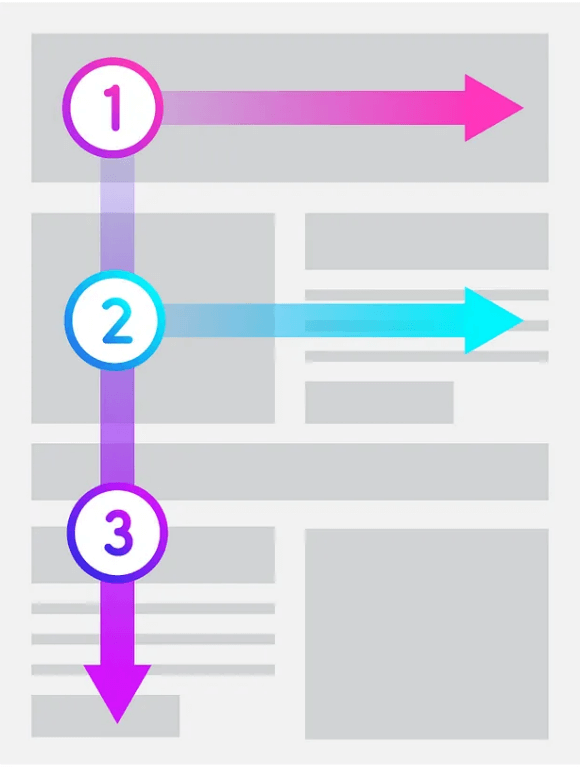
Most email templates start with the company logo, followed by a greeting and a headline that is catchy and relevant to the content. After the main body, you’ll usually find a call-to-action (CTA) button that stands out from the rest of the text. Finally, you can add an email footer with important information about the company, such as location, contact information, and social media profiles.
Here’s a template example by Moosend that meets all these criteria:
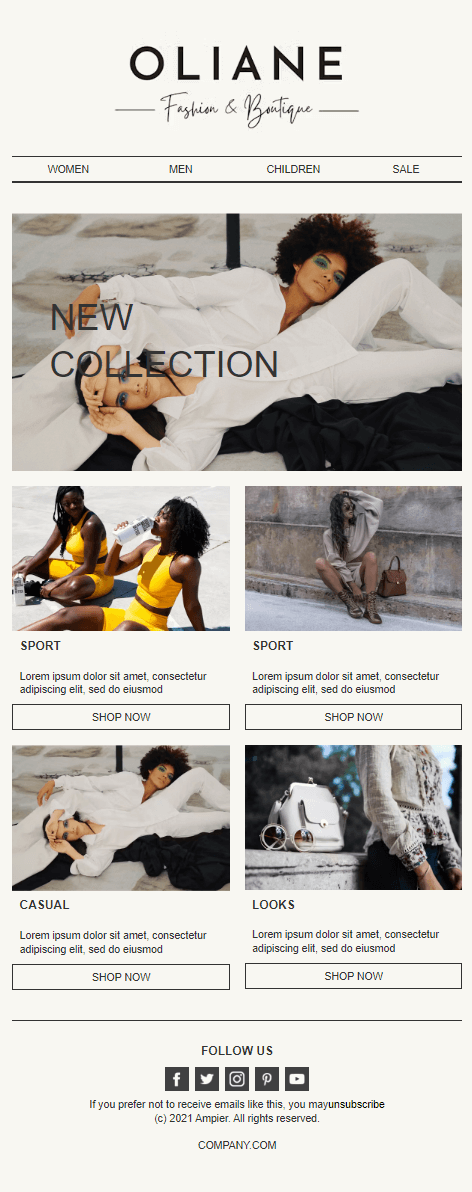
3. Craft Compelling Email Design
The well-known saying “A picture is worth a thousand words” also applies to emails. Even though plain text emails are effective sometimes, especially in cold sales, most marketers opt for HTML emails with creative assets, such as images and GIFs.
Overall, your email design should reflect your brand tone of voice and showcase your product/service in the best possible way. For instance, you can add beautiful product images or a video/GIF showing how to use a specific service.
Subject line: The $50 Sport Short

Above, you can see how Everlane showcased a piece of shorts from the men’s collection. Subscribers land on an image with a model wearing that piece of cloth, followed by a picture with a product description.
Creating emails that look like this is not as complicated as it seems. Most marketing automation platforms offer ready-made templates that are easily customizable using drag-and-drop editors. Here’s a snapshot from Moosend’s editor to get an idea:
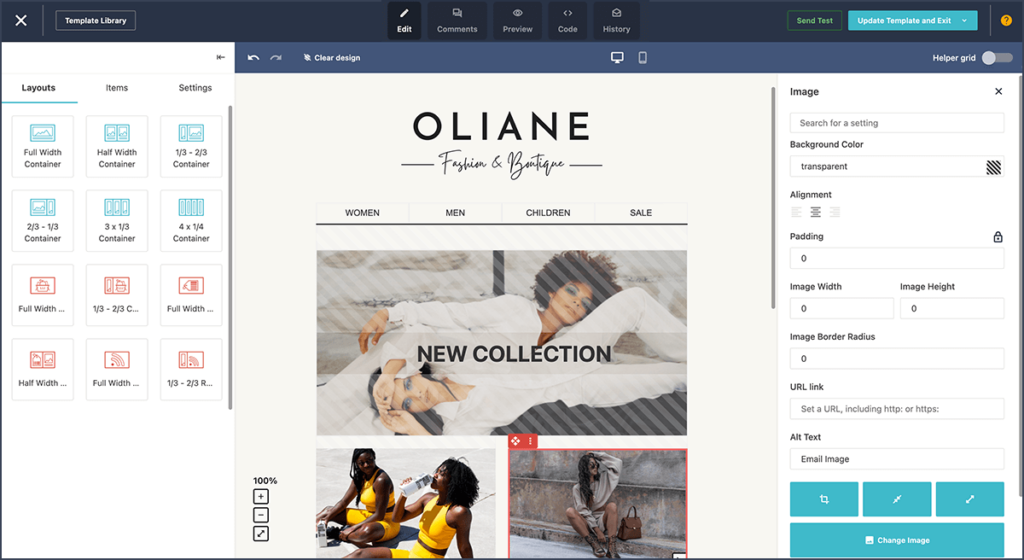
4. Optimize Your Storytelling
Apart from great design, you also need fantastic copywriting to stand out from the crowd. Again, it starts with your subject line; you need catchy and inspiring copy to motivate readers to open your emails. But what about the rest of your copy?
Firstly, sustaining your brand tone and keeping a unified voice across different channels is essential to help readers identify you faster. Secondly, enhance your storytelling with authentic and creative elements so that readers find it interesting.
Many marketers add a sense of urgency to their content, especially when promoting discounts and offers to make leads convert faster. Creating concise and relevant content is also vital, or you might lose your reader’s attention or even trust sooner than expected. Another helpful tip is avoiding jargon and choosing simple words to keep a friendly tone, as a more rigid language may look distant.
Check out this email example by Hiya. They have aligned the subject line with the email content according to their goal – introducing a new product to their audience:
Subject line: We’d love for you to give us a try…

5. Personalize Your Content
Personalized marketing has gained solid ground over the last years as it has proven to be a powerful tool in every business’ toolkit. Customers and prospects who receive tailored recommendations related to their previous purchases or website behavior are more likely to convert.
So how can you personalize your email campaigns? First, you can utilize an email service with automation and dynamic content capabilities. This way, the content each subscriber receives will rely on factors such as previous user behavior (e.g., webpages or products they browsed) or preferences (e.g., recent purchases).
Another way to tailor your content to recipients is through list segmentation. Using a list management tool, you can divide your audience into segments based on shared characteristics like demographics (e.g., age, gender), geographic location, and psychographic traits, among others.
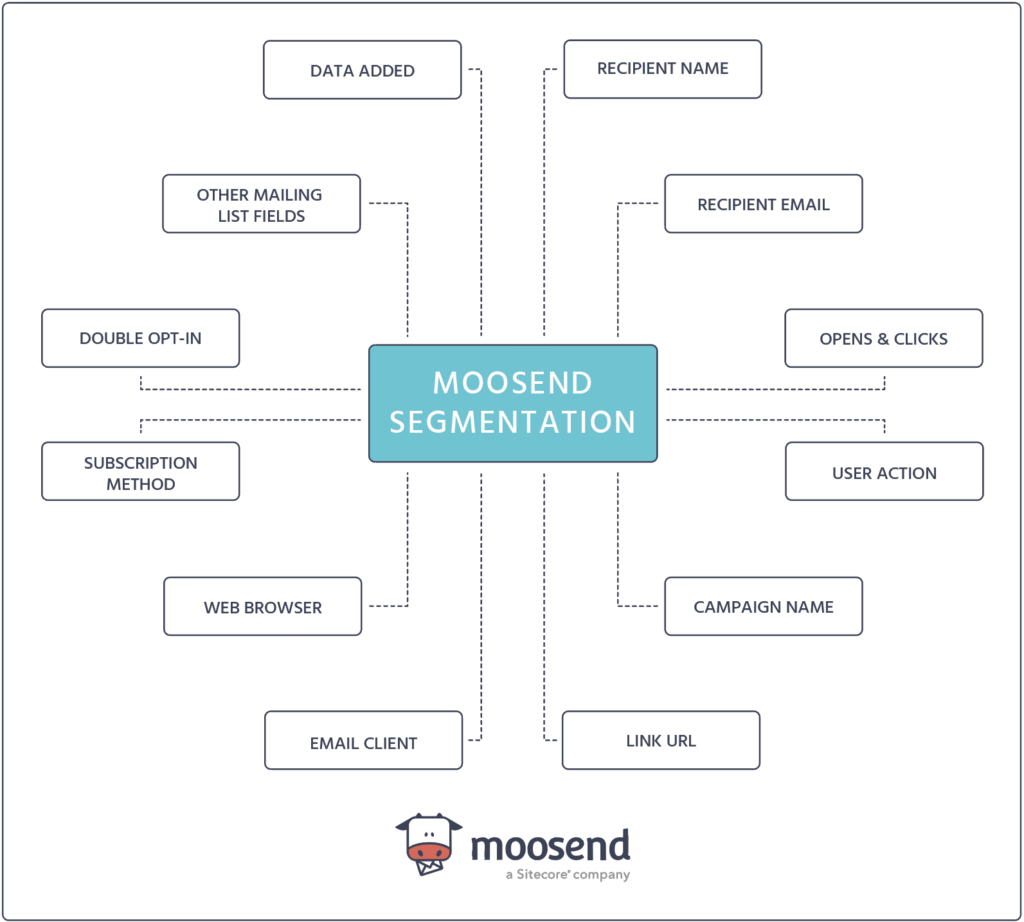
To excel in customer segmentation, it’s important to know your buyer personas and their journey through the pipeline in-depth. This way, your messaging will become more effective and your open, conversion and click rates will gradually rise.
6. Send Welcome And Transactional Emails
Welcome and transactional emails are amongst the most popular email types as they follow up specific user actions and are usually expected from the audience. Therefore, it’s important to make the most of these campaigns to build a positive momentum with new subscribers or recent buyers.
A great welcome email warmly greets subscribers who have just provided their opt-in and informs them briefly on what to expect next. It’s a perfect digital space to showcase your brand and share a bit more about your vision and mission without overwhelming them.
As for transactional emails, which encompass confirmation emails or shipping status emails, your need an SMTP server to set them up. Once you’ve checked that box, remember that apart from information related to the completed action (e.g., shipping information), they also provide the opportunity for promotion.
For example, you can add your best-selling options or resources on how to best use the items/services they’ve recently purchased. This order status email by GIR included additional information on how to clean products without damaging them.
Subject line: Order GIRCO650000 has been delivered!

7. Create Re-engagement Email Sequences
Customer acquisition costs five times more than customer retention. Therefore, if you start noticing that certain previously attentive subscribers interact less with your emails, it’s time to incentivize them to stay.
Hence, re-engagement automation workflows are triggered to win churn customers’ attention back. The number of emails depends on your average customer journey, but we recommend keeping it to up to four. But what type of content can you include in this email series? You can start with new products and launches they might be missing and continue with an offer for those who still don’t convert.
Removing those recipients from your email lists is best if they remain disengaged, as they might hurt email deliverability in the long run. Inform them about it with a dedicated email as Hulu did and allow them to re-activate their subscription if they wish:
Subject line: Your Hulu subscription has been canceled
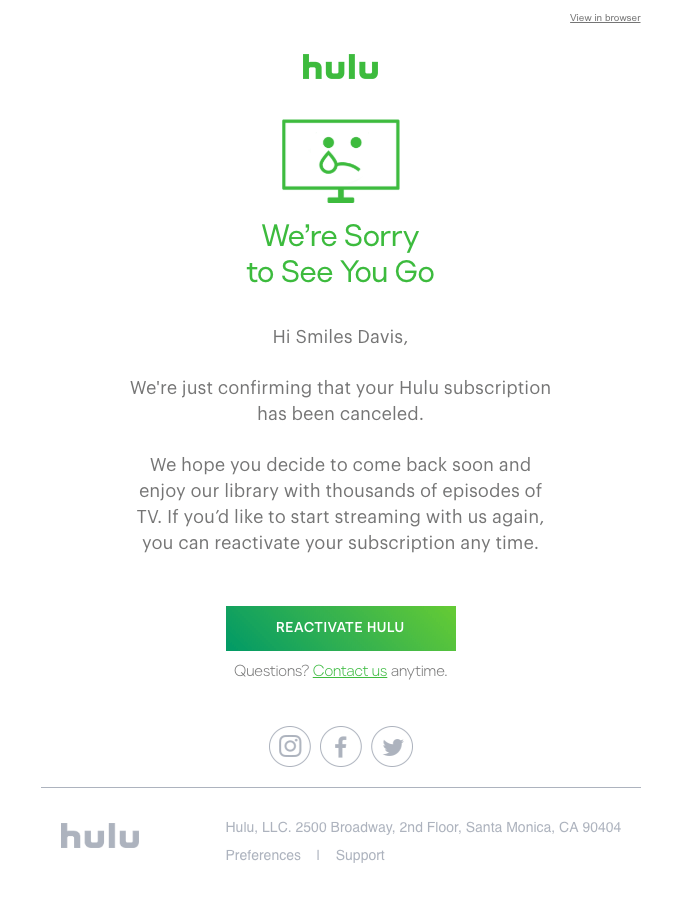
8. Conduct A/B Testing
If you want to ensure that your recipients will engage with your next email, you can utilize A/B Testing to make more data-driven decisions about parts of your email content.
With this digital marketing tactic, you can experiment with two different versions of an email to see which is more popular with your audience. The one that prevails will be sent to most subscribers and hopefully increase your metrics. Here’s how to set up A/B testing quickly with Moosend:
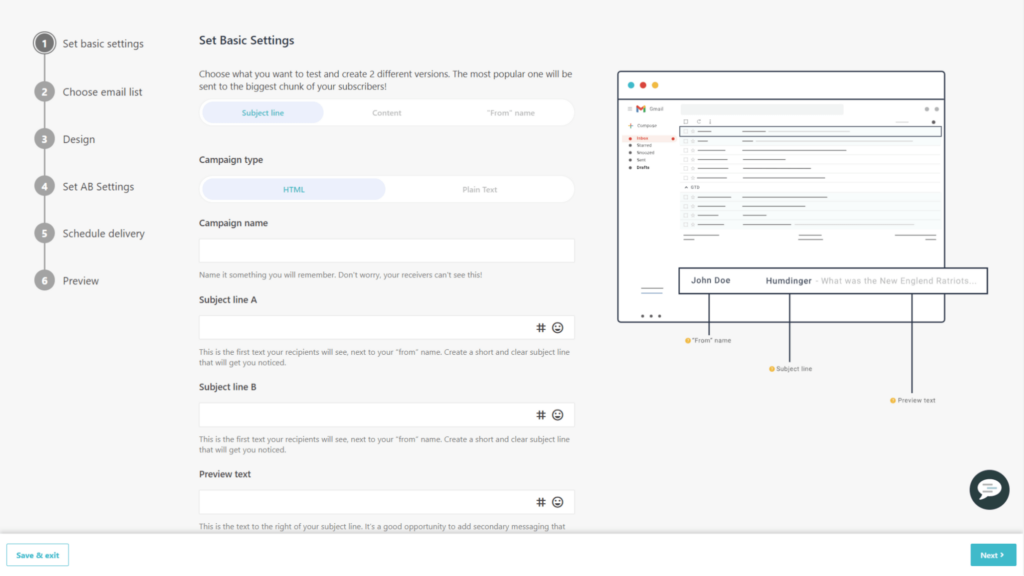
Overall, you can A/B test different email components, such as the subject line, sender name, and parts of email content like the call-to-action. So if you’re indecisive about which email version will resonate with most subscribers, you can benefit from this tool.
9. Ensure Mobile Responsiveness
Did you know that 81% of email recipients prefer to open emails on their mobile devices? This trend indicates how crucial ensuring your emails look perfect on every device is. Otherwise, customer experience will be compromised.
Therefore, pick an email service with mobile-responsive templates to avoid similar issues. The layout will be adapted to mobile or tablet dimensions for good readability. Lastly, specific platforms enable users to see how their emails will perform for different email clients.
So What Makes Emails Engaging?
Long story short, no magic recipe can promise high engagement rates. You’ll have to experiment with different email marketing ideas to spot the patterns that work best for your audience and capitalize on them.
However, it’s essential to stick to your brand guidelines and keep consistent messaging and design across platforms so that customers remember you. Embrace a unique, fun, and attractive tone, as this will let you make a difference in chaotic subscribers’ mailboxes.
Need a platform to streamline your marketing efforts and secure high engagement? Sign up for a free Moosend trial today and check out our features!
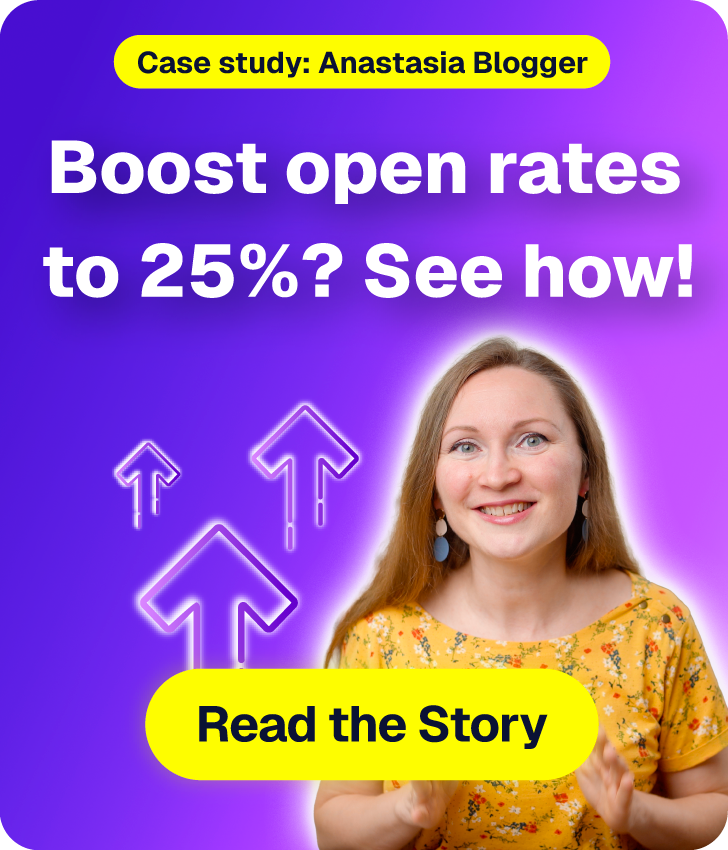
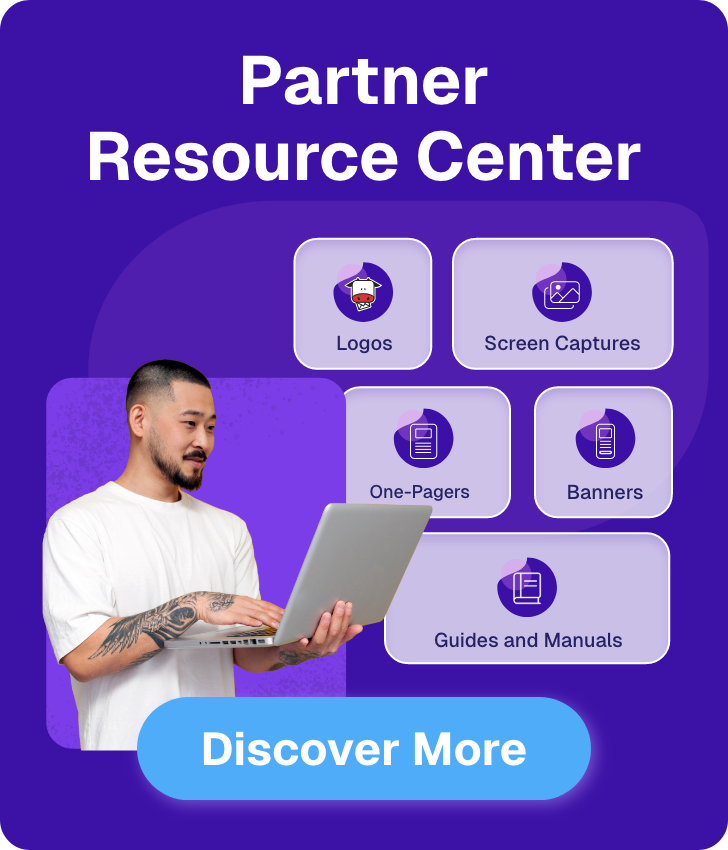

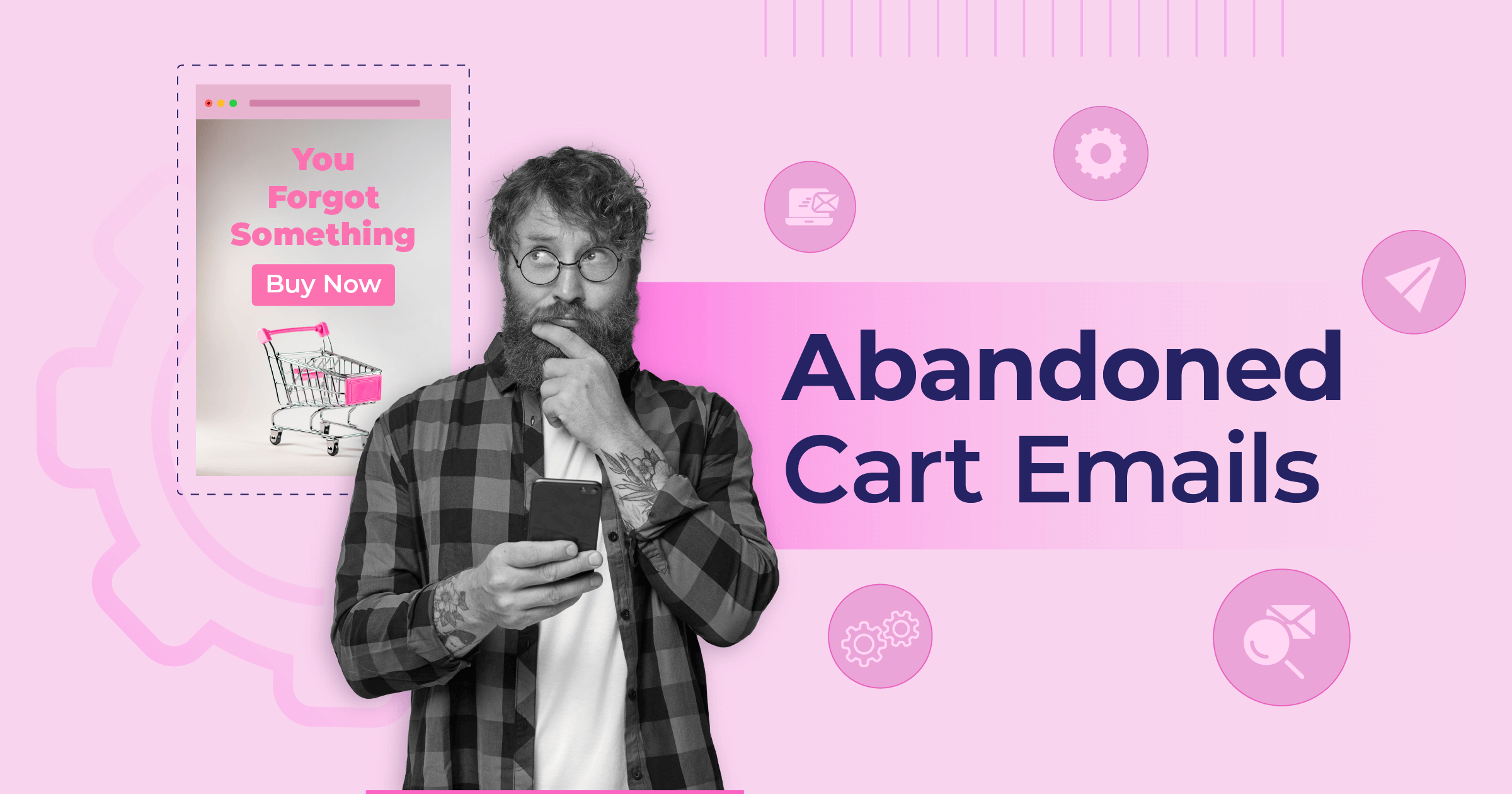
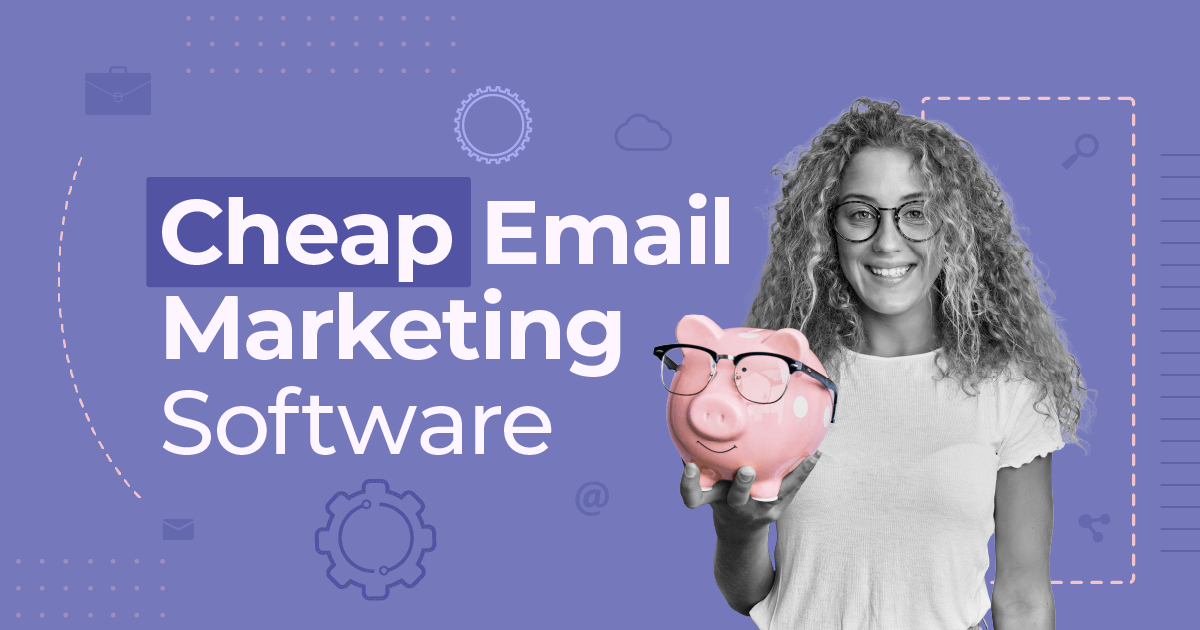
 Published by
Published by
